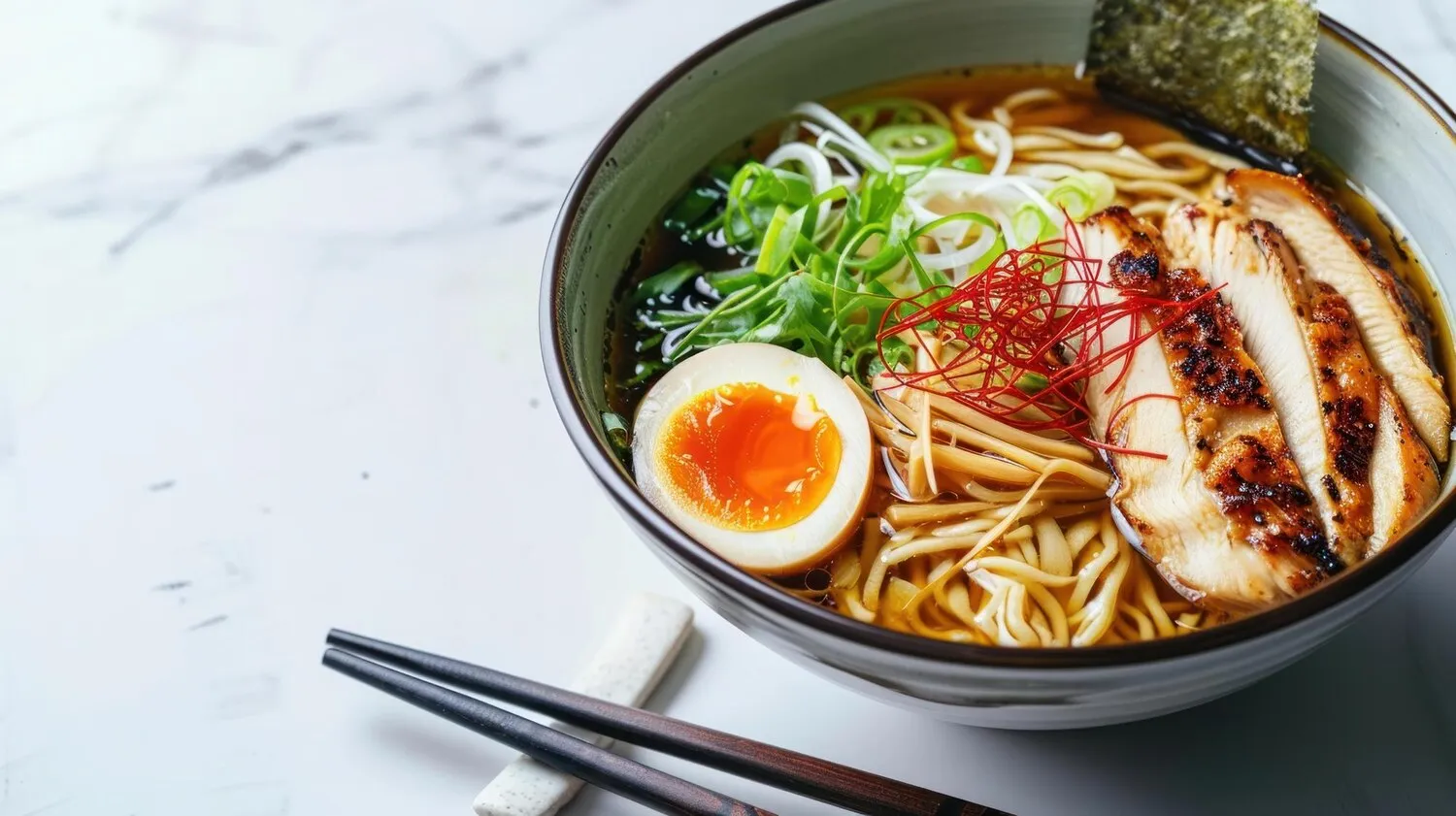
Ramen
They have ramen
Nutrition Facts
* The % Daily Value (DV) tells you how much a nutrient in a serving of food contributes to a daily diet. 2,000 calories a day is used for general nutrition advice.
Wakuwaku
Ramen's origins can be traced back to Chinese wheat noodles. It was introduced to Japan in the late 19th or early 20th century, likely through Yokohama Chinatown. Initially, it was called 'Shina soba' (Chinese noodles). Over time, it was adapted to Japanese tastes and ingredients, evolving into the distinct dish we know today as Ramen.
Ramen is deeply ingrained in Japanese culture, representing a fast, affordable, and comforting meal enjoyed by people of all ages and backgrounds. It has evolved into a diverse and regional culinary art form, with countless variations and dedicated ramen shops ('ramen-ya') across the country.
Regional Variations
Different regions of Japan boast unique ramen styles, such as Hakata ramen (tonkotsu broth), Sapporo ramen (miso broth), and Kitakata ramen (curly noodles). These regional variations reflect local ingredients and culinary traditions.
Ramen Culture
Ramen is not just a meal but an experience. Slurping noodles is considered polite and enhances the flavor. Many ramen shops have specific etiquette, such as focusing on the bowl and minimizing conversation.
Ramen as an Art Form
Ramen chefs are often highly skilled artisans, meticulously crafting each bowl to achieve a perfect balance of flavor, texture, and presentation. Ramen competitions and rankings are common, showcasing the creativity and dedication of ramen chefs.
Ramen offers a complex interplay of savory, umami, and salty flavors, often balanced with richness and aroma. The primary flavor components come from the broth, tare (seasoning sauce), noodles, and toppings.
The broth is the soul of ramen, often made from pork bones (tonkotsu), chicken (chintan), seafood, or vegetables. It is simmered for hours to extract maximum flavor. The 'tare' is a concentrated seasoning sauce, typically soy sauce (shoyu), miso, or salt (shio), which provides the dish's core flavor profile. Noodles vary in thickness, shape, and texture depending on the region and ramen style. Toppings such as chashu (braised pork belly), menma (fermented bamboo shoots), nori (seaweed), scallions, and ajitama (soft-boiled marinated egg) add textural and flavor complexities.
Broth Temperature
The broth should be served hot to maintain its flavor and aroma.
Noodle Texture
Noodles are best enjoyed immediately after cooking to prevent them from becoming soggy.
Slurping Technique
Slurping aerates the noodles and broth, enhancing the taste experience.
Customization
Many ramen shops allow customers to customize their orders, such as noodle firmness, broth richness, and topping selection.
Explore additional Japanese dishes and restaurants
Explore JapaneseDiscover top dining spots and culinary experiences in Wels.
Explore WelsLearn more about the food culture, restaurant scene, and culinary heritage of Austria.
Explore Austria